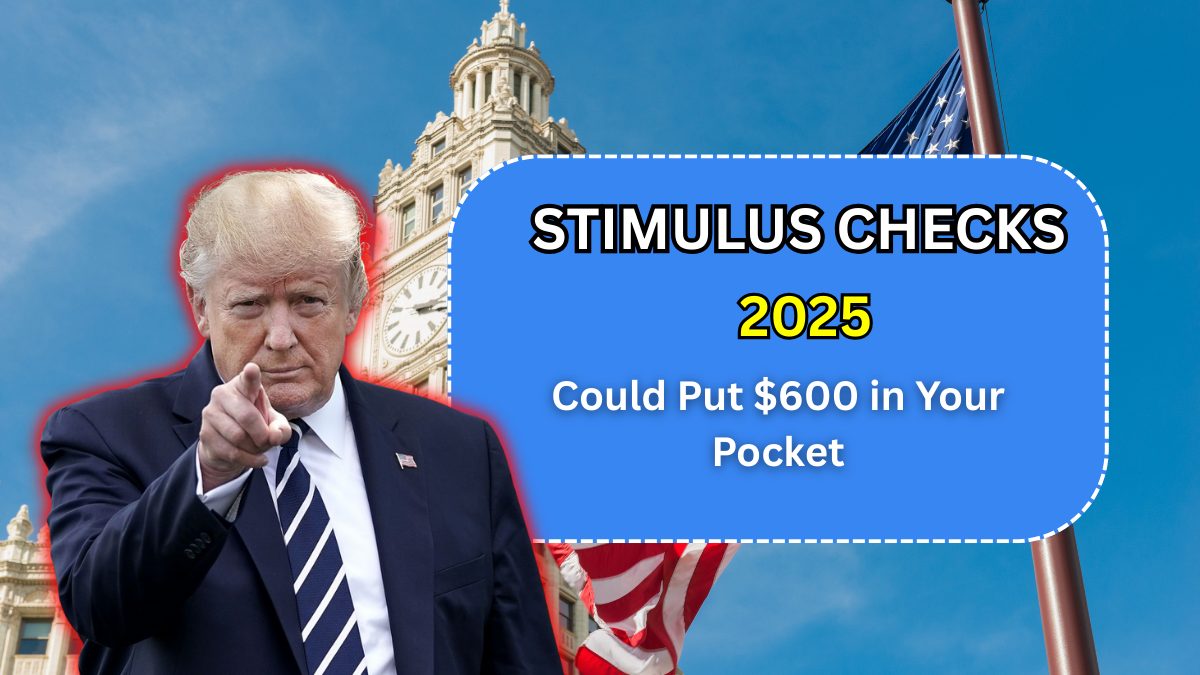The debate over whether Americans will see new stimulus checks in 2025 has heated up with the introduction of the American Worker Rebate Act (AWRA). Championed by Senator Josh Hawley, the proposal has gained headlines for promising tariff-funded rebates of at least $600 per person. However, while the plan sounds familiar to the pandemic-era stimulus programs, it is still only a bill and not yet law. Here’s a breakdown of what it could mean for workers, families, and the broader economy.
No Stimulus Approved Yet
First, it’s important to underline the facts. As of August 2025, no new federal stimulus payments have been approved. The Internal Revenue Service (IRS) has made it clear that rumors about automatic checks this summer are false. Any payments would only occur if the American Worker Rebate Act makes its way through Congress and receives presidential approval. You can always verify current IRS announcements through the official IRS website.
The bill was introduced in late July 2025 and referred to the Senate Finance Committee. Until it clears both the Senate and the House of Representatives, and is signed by the President, it remains only a proposal.
How the American Worker Rebate Act Would Work
Unlike the stimulus checks distributed in 2020 and 2021, which were funded by deficit spending, the AWRA would be financed entirely by tariff revenues collected by the U.S. government.
1. Funding Source
Tariffs essentially taxes on imported goods have surged in recent years. According to the U.S. Department of the Treasury, tariff collections totaled more than $113 billion in fiscal year 2025 so far, a sharp rise compared to previous years. In June alone, revenue from tariffs reached about $27–30 billion, compared with just $4 billion in June 2024. These funds, under the AWRA, would be redistributed back to households. You can track federal revenue updates on the Treasury’s Fiscal Data portal.
2. Rebate Amount
The act sets a minimum rebate of $600 per eligible person, including both adults and qualifying children. That means a family of four could receive as much as $2,400. If tariff revenues exceed projections, the rebate amount could be increased proportionally.
3. Eligibility
The rebate would be means-tested, similar to the pandemic stimulus checks:
- Single filers: Full amount for incomes up to $75,000.
- Married filing jointly: Full amount for incomes up to $150,000.
- Heads of household: Threshold at $112,500.
For incomes above those levels, the rebate would phase out gradually, decreasing by $5 for every $100 earned over the limit. For example, a married couple earning $180,000 would receive a reduced amount, while households above approximately $198,000 would see no benefit.
4. Delivery
If passed, payments would likely be distributed through the IRS, which handled the three rounds of COVID-era stimulus. Eligible taxpayers who filed returns and had direct deposit information on record would receive payments electronically, while others could expect paper checks or debit cards.
Potential Economic Impact
Policy analysis suggests the AWRA could have a measurable effect on reducing inequality and poverty. Modeling from PolicyEngine, a nonpartisan think tank, estimates that:
- 80% of U.S. residents would receive some benefit.
- The average household rebate would be around $973.
- The Supplemental Poverty Measure could drop by nearly 7%, offering relief to millions of low- and middle-income households.
- The Gini index, a common measure of inequality, would also fall modestly.
Such outcomes resemble the short-term poverty reduction effects seen during the pandemic stimulus, though critics warn they may be temporary.
Criticism and Political Debate
While the proposal has generated interest, it also faces criticism on several fronts:
- Fiscal Concerns – Economists argue that even if funded by tariffs, the rebates may strain federal finances. The U.S. deficit is already projected to widen in coming years, and relying on volatile tariff revenues could be risky.
- Political Motivation – Some commentators see the plan as politically timed, appealing directly to working-class households ahead of the 2026 election cycle.
- Trade Policy Implications – Higher tariffs may raise consumer prices on imported goods, offsetting some of the relief provided by the rebate.
Still, supporters argue that the plan represents a fair way to return money raised from tariffs to ordinary families rather than leaving it to expand government budgets.
What It Means for You
If you are wondering whether you should plan around receiving a new check, the answer is not yet. For now:
- No new stimulus checks are guaranteed.
- If the AWRA passes, the IRS would release guidance on eligibility and timing.
- Households under the income thresholds could expect at least $600 per person, possibly more depending on tariff revenue.
For official updates, taxpayers should monitor:
- IRS Newsroom – for guidance on rebates and filing.
- U.S. Senate – for progress of the bill in Congress.
- U.S. Treasury – for tariff revenue and funding details.
Conclusion
The American Worker Rebate Act of 2025 is one of the most high-profile proposals currently being debated in Washington. It promises tariff-funded checks of at least $600 per person, aimed at giving working families a direct financial boost. But as of now, it is only an idea on paper.
Whether the plan succeeds will depend on Congressional negotiations, budget concerns, and the broader political climate. Until then, Americans should remain cautious about claims of “guaranteed checks” and rely only on updates from government sources.
Nand Kishor is a content writer covering business, economy, and world affairs. With a background in journalism, he focuses on clear, ethical, and insightful reporting. Outside of work, he enjoys chess, cricket, and writing short stories.
